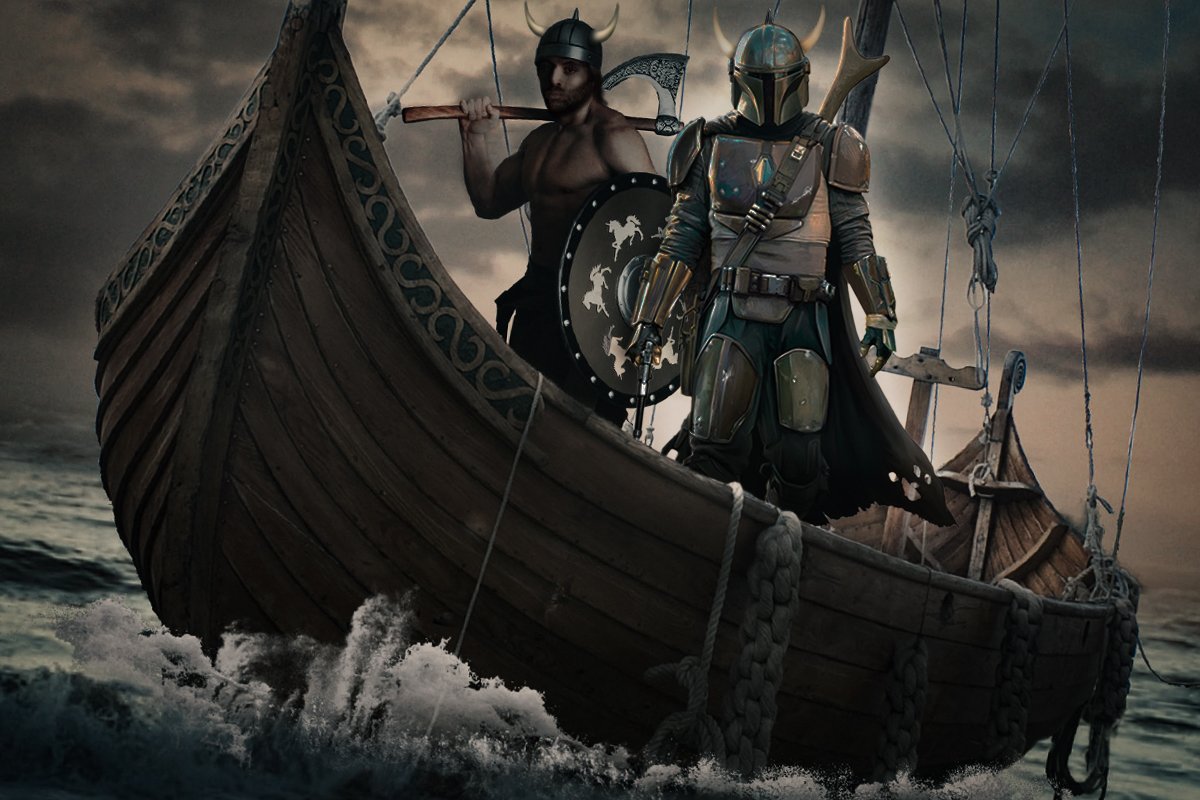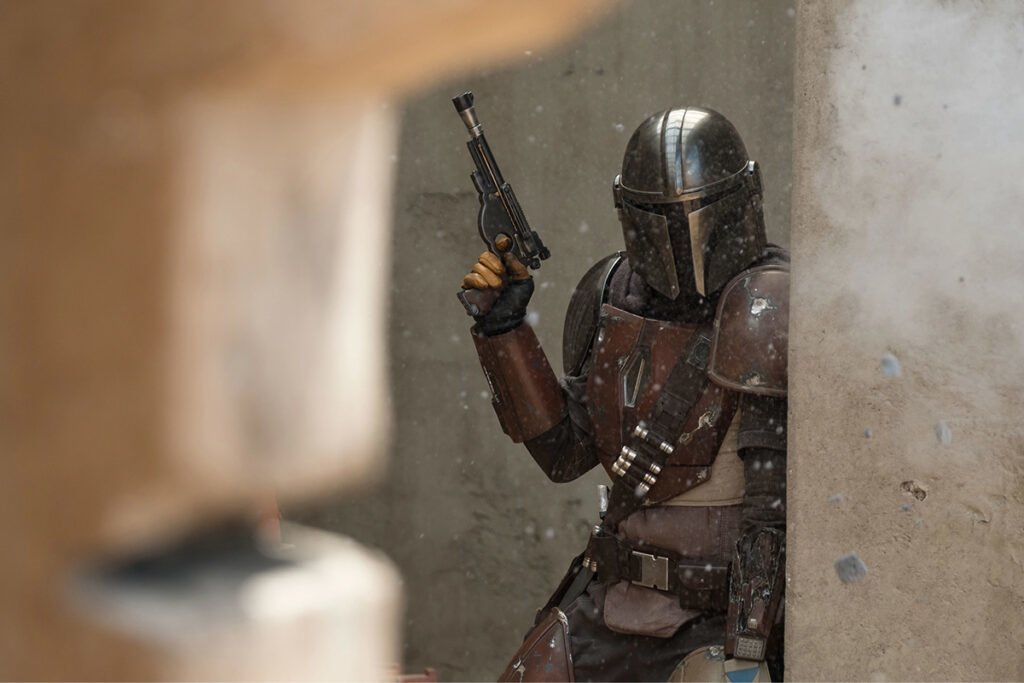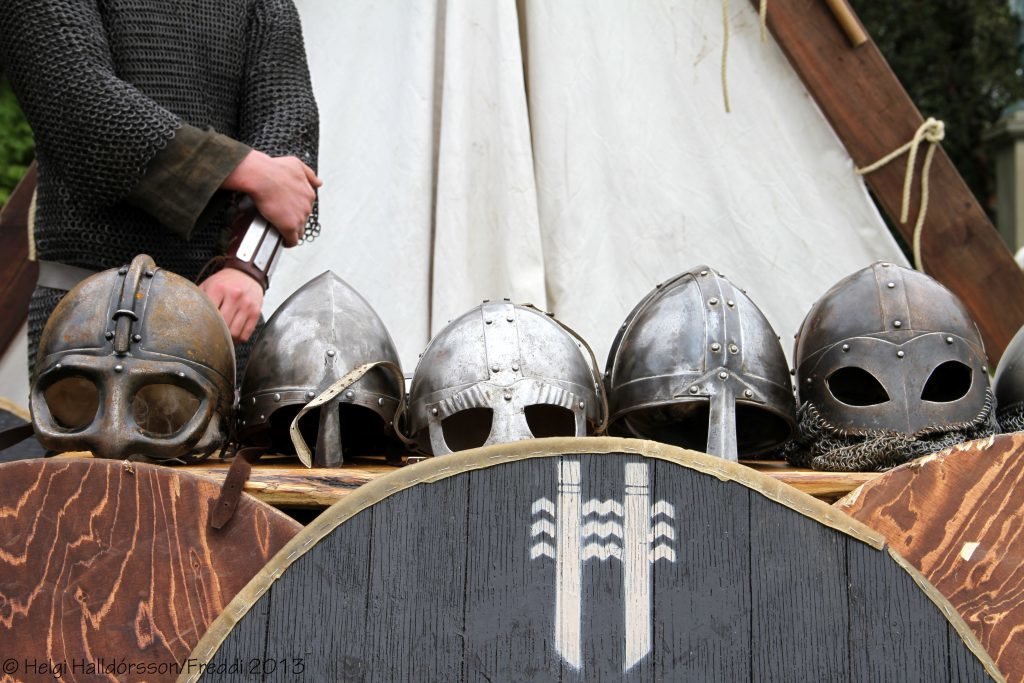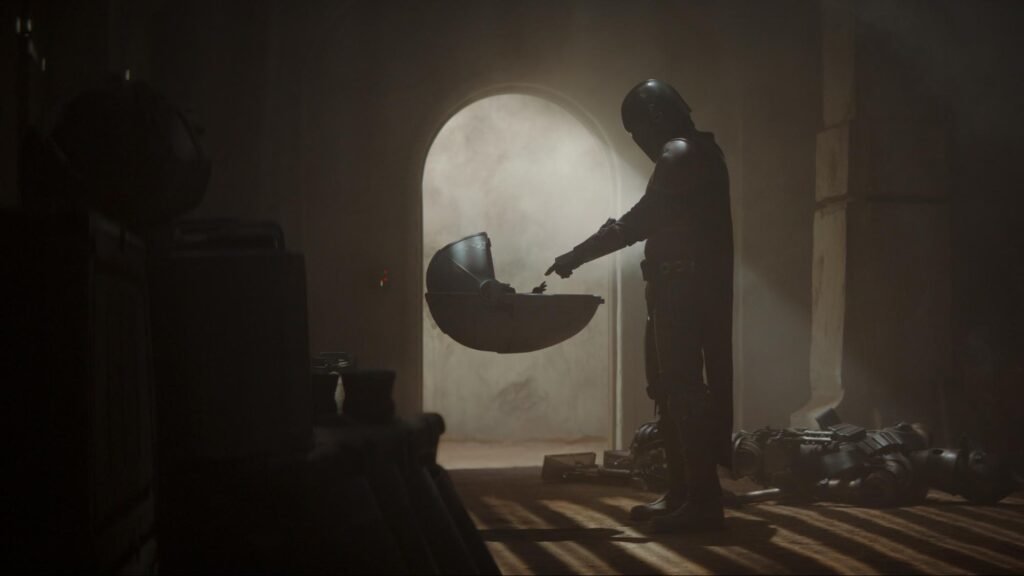Mandalorians Are the Viking Raiders of the ‘Star Wars’ Universe

Photo composite by Kenna Milaski/Coffee or Die Magazine.
Before Jon Favreau produced his wildly popular space Western about a little-known segment of the Star Wars universe, the only reference to Mandalorians on the big screen was a passing one in Star Wars Episode 2: Attack of the Clones, where it’s revealed that Jango Fett — the genetic donor for the entire clone army — is a Mandalorian. Seventeen years later, Disney released the most popular addition to the franchise since Obi-Wan turned Anakin into Lieutenant Dan. You ain’t got no legs, Anakin!
Thanks to Favreau, Star Wars fans now have a live-action show about one of the greatest warrior cultures in the Star Wars universe. What fans of the show may not know is that much of Mandalorian culture and mythology is borrowed from real history — specifically, Viking culture. But before we talk about everyone’s favorite maritime raiders, here’s a brief history of Mandalorians.
Behind the Scenes
During the production of Star Wars Episode V: The Empire Strikes Back, concept artist Ralph McQuarrie and visual effects artist Joe Johnston developed a design for a team of Imperial Super Commandos with weapons built into their armor specialized for the purpose of killing Jedi. As production continued, they scrapped the idea and rolled the special forces team into the bounty hunter Boba Fett.

The first reference to the Mandalorians was in the Empire Strikes Back novelization by Donald F. Glut, where he described them as “a group of evil warriors defeated by the Jedi Knights during the Clone Wars.”
For the next 30 years, Mandalorian culture was expanded in myriad Star Wars novels, comic books, and other sources. In the Knights of the Old Republic (KOTOR) video game series, Mandalorians were portrayed as some of the most dangerous antagonists in the galaxy, second only to the Sith. Throughout the extended canon, it was only hinted that Boba Fett was connected to the Mandalorians.
In 2010, during Season 2 of The Clone Wars animated series, fans finally got to see the fully fleshed-out concept behind Mandalorian warrior culture. “The Mandalore Plot” episode introduced viewers to the Death Watch, a Mandalorian terrorist group bent on continuing their ancient warrior traditions. The Death Watch was pitted against a new modern pacifist movement led by the sister of Bo-Katan, the blue-armored Mandalorian played by Katee Sackhoff in Favreau’s live-action series.
Viking Raiders of the Galaxy
The introduction of Mandalorians to The Clone Wars cemented them as the Viking raiders of the Star Wars franchise. Animation producer Dave Filoni wanted to give the Mandalorians a “Nordic flavor” using the traditional V-shaped breastplate worn by many Norsemen during the tail end of the Viking era as the foundation for the design behind all Mandalorian armor.

The Clone Wars also cemented the idea that Mandalorians were not a race but a way of life. Mandalorians are willing to take anyone who swears to live by the creed and adhere to Mandalorian tradition regardless of their species. This sets them apart from The Empire, which is portrayed as favoring humans over other “inferior” races. Obvious racial metaphors aside, this idea of adopting people into the tribe was one shared by Vikings, who often adopted the children of their slaves.
The comparisons with the ancient maritime raiders doesn’t stop there. Proving oneself through combat is the cornerstone of Mandalorian self-identity and culture, and they all follow the Mandalorian Creed, which — frustratingly for nerds like me — has never been written out or vocalized. Mandalorian fans may remember the creed as the reason Din Djarin (Mando) has to return Grogu (Baby Yoda) to the Jedi, but good luck figuring out what the creed actually says. Like, how am I supposed to join if I don’t even know their mission statement?
One thing we know for sure about the creed is that it instills a love among Mandalorians for single combat. It’s the only other rule in the creed ever mentioned, and it pops up continuously during the Clone Wars and Rebels cartoons. Mandos can invoke a Game of Thrones-style trial by combat for pretty much anything. Don’t like your boot lieutenant? Fragging him just gets you another boot replacement, but if you slay him in single combat, now you’re the LT! Want your buddy’s car? Slay him in single combat, and it’s yours — no pink slips required. This is essentially the Viking code of honor/succession, too.

For this fictionalized group of war-hungry space pillagers, the Mando creed pretty much rewards those who are really good at mercilessly killing without moral reservations. This probably explains their long history of warlords vying for power, the constantly changing heads of state, and nonstop wars, which is how real Vikings actually lived.
During the centuries leading up to the Viking Age, which began in 793 AD, the peoples of Norway and their surrounding territories were in a near-constant state of war. Small tribal groups were scattered across the harsh, cold country. Long winters and short farming seasons meant raiding other tribes was a necessary part of surviving in their world. Just like the Vikings, Mandalorians spent a lot of time warring and vying for power.
In 865, Vikings finally stopped slaughtering one another long enough to form what historians call the Great Heathen Army, which invaded England with the intent to conquer new worlds, much like their Mando counterparts did when they nearly wiped out the Jedi during the time of the Old Republic.
Perhaps the most Viking part about Mandalorian culture is just how much we don’t know about it. Just as Djarin has to piece together a thousand years of forgotten history to try and understand what it means to be Mandalorian, historians have faced a similar challenge in studying the exploits of the West’s most notorious maritime raiders. Thankfully, that’s never stopped anyone from making great shows about Vikings — and Viking-like warriors.
BRCC and Bad Moon Print Press team up for an exclusive, limited-edition T-shirt design!
BRCC partners with Team Room Design for an exclusive T-shirt release!
Thirty Seconds Out has partnered with BRCC for an exclusive shirt design invoking the God of Winter.
Lucas O'Hara of Grizzly Forge has teamed up with BRCC for a badass, exclusive Shirt Club T-shirt design featuring his most popular knife and tiomahawk.
Coffee or Die sits down with one of the graphic designers behind Black Rifle Coffee's signature look and vibe.
Biden will award the Medal of Honor to a Vietnam War Army helicopter pilot who risked his life to save a reconnaissance team from almost certain death.
Ever wonder how much Jack Mandaville would f*ck sh*t up if he went back in time? The American Revolution didn't even see him coming.
A nearly 200-year-old West Point time capsule that at first appeared to yield little more than dust contains hidden treasure, the US Military Academy said.













